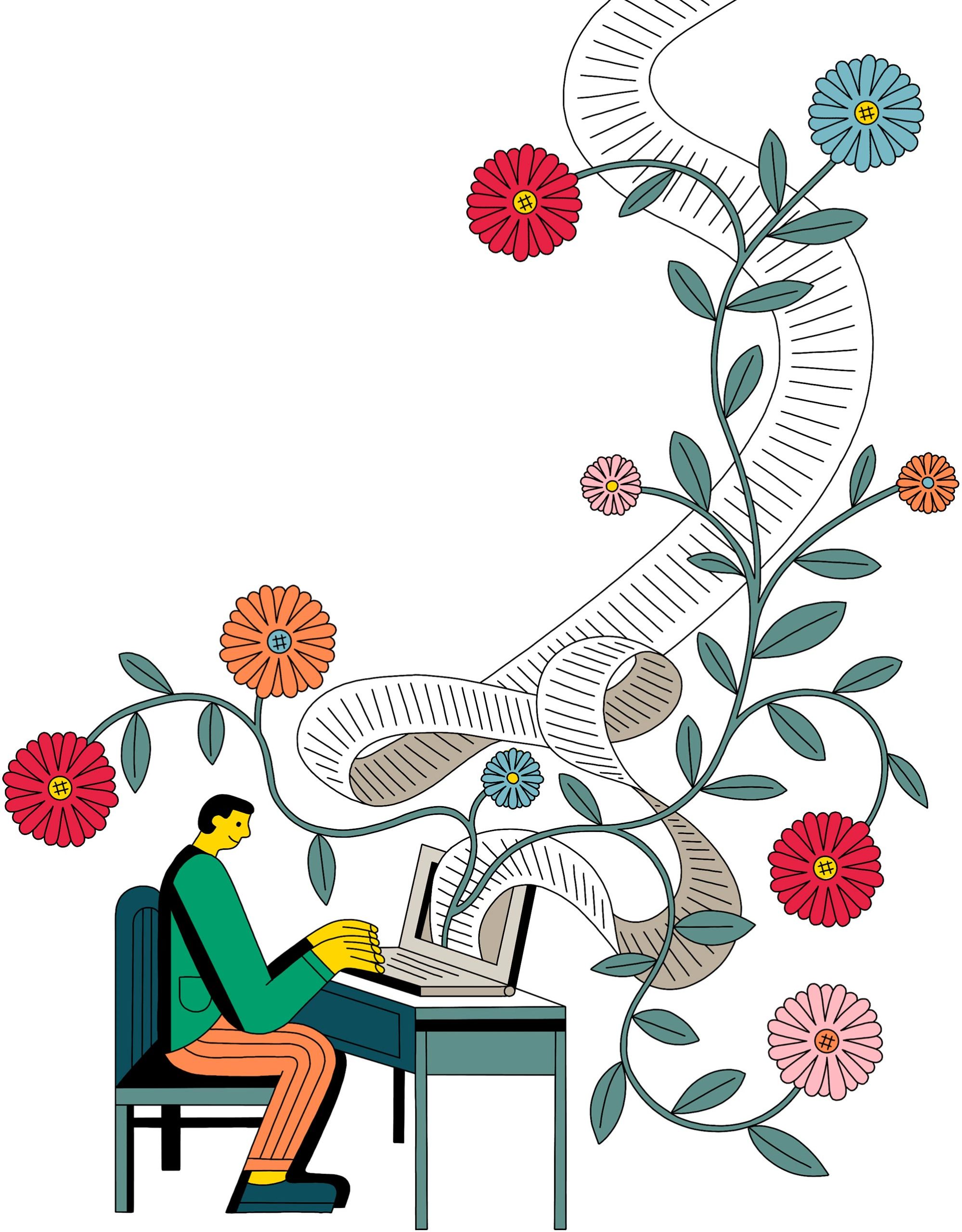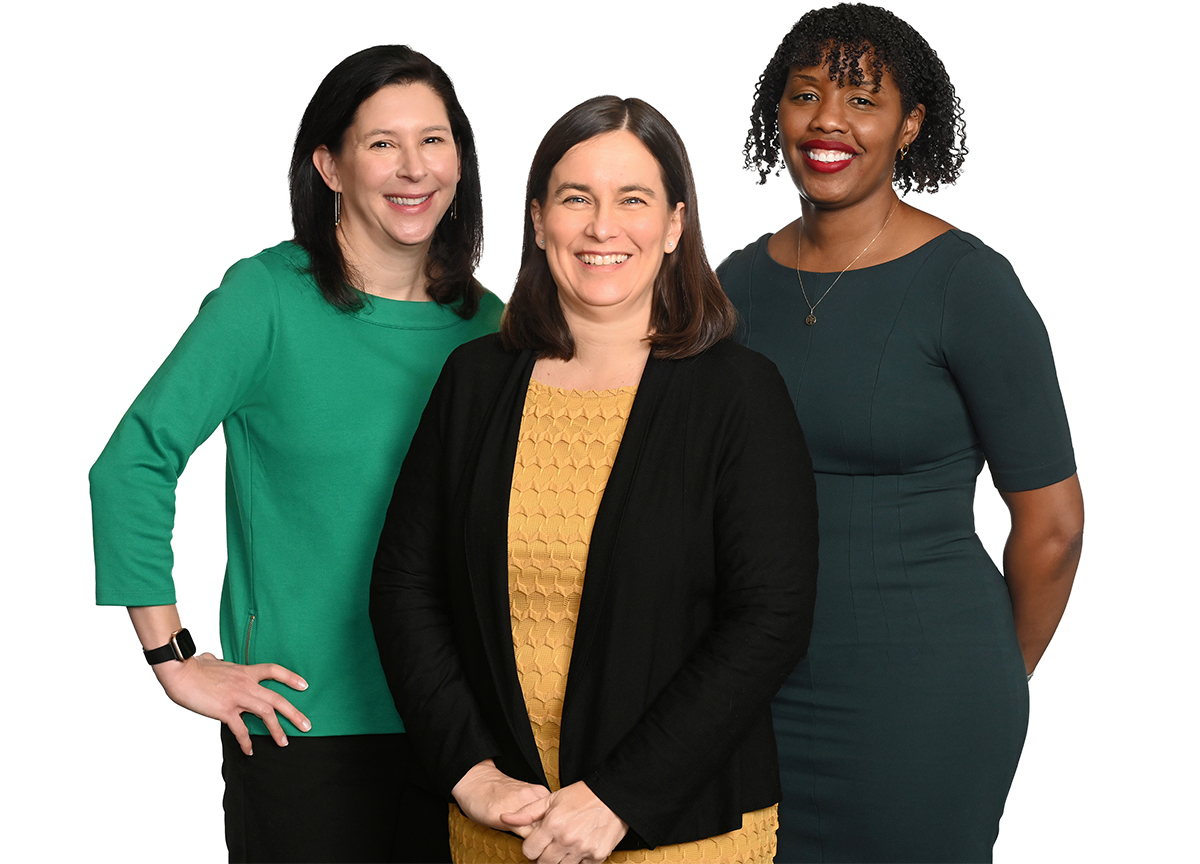Helping Students Find Their Voice

The group has been busily revamping the curricula, which help more than 900 students a year soup up their communication, analytical, research, and writing skills, so they can hit the ground running once they graduate. “The reorganization allows us to look at the Law School’s mandatory skills training holistically and make connections where they weren’t explicit before,” says Strauss.
The change goes much deeper than a bureaucratic shuffling of departments. “Reexamining the curriculum is pushing us to think deeply about what skills are most important for today’s lawyers, regardless of practice area,” says Strauss.

The Write Stuff
Fordham’s writing program is all about those whys … and the hows too. It begins with a mandatory yearlong writing course for 1Ls that focuses on principles of legal research and reasoning and how to convey complex analysis clearly and accurately in real-world documents, such as email, memoranda, and appellate briefs. Classes are not only about writing but also interacting with professors, getting feedback, and prepping for the realities of practice students will encounter once they begin their legal careers. Strauss and Ames hope to further contextualize the course by more closely tying students’ written projects to existing introductory modules on interviewing and negotiation. And they are looking to more deeply weave the concepts of social justice, technological competence, and professionalism throughout the program.
The 1L class is just the tip of the iceberg. Fordham’s advanced legal writing program allows students to expand on their litigation skills and also explore the more transactional side of legal practice. “There are few schools that have as many drafting classes as we do,” Strauss says. “Students can dip their toes into many different pools.”
“Good legal analysis involves writing clearly and persuasively,” says Ames, who formerly taught legal writing as an assistant professor at Brooklyn Law School, and, prior to that, served as an attorney with the U.S. Department of Education’s Office for Civil Rights. “For example, Dr. Clarence B. Jones, who helped Dr. Martin Luther King Jr. write one of the most beautiful and powerful pieces of writing in history, the ‘I Have a Dream’ speech, was a lawyer. He also went to Juilliard, and there’s something musical about his writing. But everyone has a unique voice and view of the world, and it’s incredibly gratifying to help students find theirs.”
Strauss herself learned some postgrad, on-the-job lessons about writing that she hopes to transmit to her students.“At my first law firm, my mentor went through my first pro bono brief word by word and circled just one line that he said was strong. And it was the one line that sounded like the way I actually spoke,” she says. “That taught me a lot about the value and power of putting my natural voice to use within the law.” She hopes to help students come to that realization before graduation.
Like Ames, Strauss and Ricardo have held multiple positions within the legal system. Both came to Fordham this past summer from Columbia Law School. Strauss served as the director of Columbia’s legal writing and moot court programs. Before that, she practiced commercial litigation and clerked for the Honorable Emilio M. Garza of the Fifth Circuit Court of Appeals. Ricardo was Columbia’s dean of career services; before pivoting to academia, she worked in securities law at HSBC, Barclays, and J.P. Morgan. “We have varied practice backgrounds and experiences,” Strauss says, “but we have complementary skills. And all three of us are committed to making these programs feel supportive and inclusive.”

Using Simulations to Cement Practical Abilities
One unusual facet of Fundies is its use of actors to help present these different legal scenarios to students. The performers act as clients in various situations: a landlord-tenant dispute, someone injured in a bar fight, a person who was unlawfully detained by the police, a female law firm associate who was sexually harassed. “Other law schools may hire actors for clinics, but the opportunity to work with them isn’t available to every law student the way it is at Fordham,” says Ricardo.
After the students practice interviewing, negotiating, and advocating for their “clients,” the actors—as well as the professors and fellow students—offer feedback. Did the “client” feel a rapport with their lawyer? Did they feel their lawyer had their back? Did they understand the terminology their lawyer used? Is there something they should have said but didn’t?
“One actor told a student lawyer doing a police case that they had neglected to ask about the race of the officer,” recalls Ricardo. “Race issues aren’t always discussed in class, and we need to do that,” she says. “It’s a fact that certain people are pulled over more than other people, for instance. The law is a creature of society, and we need to educate students accordingly.”
Making the Law Interpersonal
Another benefit of simulation-based learning: It helps students grow in a vital but low-stakes way. “Any mistakes won’t actually harm anyone’s case, so students can take chances and try on personas,” says Strauss. Role-playing also produces educational dividends that aren’t always easily taught in a more conventional setting. “Working with the actors involves a range of softer skills: communicating across cultures, exercising judgment, connecting with a ‘client,’” says Strauss, who feels it’s easier to teach these interpersonal components this way than in a traditional classroom.
“One of the great things about Fundies is that you never knew what you were walking into,” says Fallon Sheridan ’22, who will be taking a job at Kirkland & Ellis in their trademark and copyright group after graduation. “The actors come in and ask questions you might not be expecting. That keeps you on your toes and helps you learn to think on your feet.”
Ultimately, though, Strauss, Ames, and Ricardo want to prepare students for what they consider to be the essential task of being a lawyer: “In the end, lawyers are problem solvers,” says Ricardo. “What we’re really doing is developing the 21st-century lawyer, ready to practice in the 21st century.”